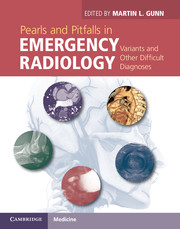Book contents
- Frontmatter
- Contents
- List of contributors
- Preface
- Acknowledgments
- Section 1 Brain, head, and neck
- Section 2 Spine
- Section 3 Thorax
- Case 30 Pseudopneumomediastinum
- Case 31 Traumatic pneumomediastinum without aerodigestive injury
- Case 32 Pseudopneumothorax
- Case 33 Subcutaneous emphysema and mimickers
- Case 34 Tracheal injury
- Case 35 Pulmonary contusion and laceration
- Case 36 Sternoclavicular dislocation
- Case 37 Boerhaave syndrome
- Case 38 Variants and hernias of the diaphragm simulating injury
- Section 4 Cardiovascular
- Section 5 Abdomen
- Section 6 Pelvis
- Section 7 Musculoskeletal
- Section 8 Pediatrics
- Index
- References
Case 34 - Tracheal injury
from Section 3 - Thorax
Published online by Cambridge University Press: 05 March 2013
- Frontmatter
- Contents
- List of contributors
- Preface
- Acknowledgments
- Section 1 Brain, head, and neck
- Section 2 Spine
- Section 3 Thorax
- Case 30 Pseudopneumomediastinum
- Case 31 Traumatic pneumomediastinum without aerodigestive injury
- Case 32 Pseudopneumothorax
- Case 33 Subcutaneous emphysema and mimickers
- Case 34 Tracheal injury
- Case 35 Pulmonary contusion and laceration
- Case 36 Sternoclavicular dislocation
- Case 37 Boerhaave syndrome
- Case 38 Variants and hernias of the diaphragm simulating injury
- Section 4 Cardiovascular
- Section 5 Abdomen
- Section 6 Pelvis
- Section 7 Musculoskeletal
- Section 8 Pediatrics
- Index
- References
Summary
Imaging description
Blunt thoracic tracheobronchial injuries usually occur within 2.5 cm of the carina [1]. In contrast, most penetrating injuries occur in the cervical trachea [2, 3]. In blunt trauma, bronchial lacerations are more common than tracheal lacerations. Chest radiographs may demonstrate pneumomediastinum (60%) and pneumothorax (70%) [4]. CT may identify the site of tracheobronchial injury in 70–100% of cases [5, 6].
Suspicious CT findings of aerodigestive injury include airway irregularity, disruption of the cartilage or tracheal wall, focal thickening or indistinctness of the trachea or main bronchi, and laryngeal disruption. Massive pneumomediastinum despite adequate tube drainage of pneumothoraces is also considered suspicious finding for aerodigestive tract injury (Figure 34.1) [7].
Cervical and thoracic subcutaneous emphysema is the most consistent radiographic finding in tracheobronchial injuries [8]. Other recognized findings include over-distention of the endotracheal tube balloon (>28mm), an oval-shaped balloon, and herniation of the balloon into the tracheal defect (Figures 34.1 and 34.2) [5]. Although it is difficult to rupture the trachea with an endotracheal tube balloon, rupture from intubation does occur (Figure 34.3) [5, 9].
The “fallen lung sign” of bronchial transection is based on a radiographic case report in 1970 by Kumpe et al., who describes how the lung falls away from the mediastinum when there is complete bronchial transection without vascular injury at the hilum [10, 11]. This is in contrast to a pneumothorax without bronchial injury where the lung usually collapses against the mediastinum. In our clinical practice, we have not identified a fallen lung sign.
- Type
- Chapter
- Information
- Pearls and Pitfalls in Emergency RadiologyVariants and Other Difficult Diagnoses, pp. 116 - 117Publisher: Cambridge University PressPrint publication year: 2013

